
Although the cauldron might be perceived as a rather niche cooking utensil, the creation of cast iron cookware arguably transformed the course of culinary history. Whereas a good cauldron was once an object to bequeath to one’s children, the item has seen much of its influence wane, ousted in modern times by lighter, non-stick kitchenware. Nevertheless, a cauldron can be a great investment. Once seasoned like any ironware, it will prove a versatile tool for slow cooking, grilling and even baking.
Cauldron Basics
The cauldron dates from the Middle Ages and typically denotes a cast iron pot with a handle that is suspended over an open fire or coals to allow a soup, stew or casserole to simmer, with or without a lid. While modern culture has rather relegated the cauldron to the Halloween section of western cuisine, where it is the favored vessel for witches’ brew, it has always remained popular in outdoors cooking and throughout Asia, where cooking over an open fire is still common. The smooth, round sides of the cauldron allow heat to distribute freely, while hot coals can also be placed on the lid to provide complete all-round heat coverage.
Slow Braising
The thick, heavy casing of a cauldron nurtures and dissipates heat more effectively than thinner stainless steel pots, making the cauldron an ideal vessel for slow-cook stews and soups. Use the cauldron, therefore, to slow braise tougher meat cuts such as beef chuck, flank and brisket, where the tissues and sinew need plenty of time to become tender. Lamb and goat meat also benefit from longer cooking periods, infusing the meat and sauce with a wonderfully intense flavor, whether the dish is a Hungarian beef goulash or a Caribbean curry goat stew. Use a thermometer to monitor a temperature between 180 and 190 degrees Fahrenheit; high enough to kill any microorganisms but not high enough to toughen the meat.
Cowboy Style
To bring a touch of the Wild West to the back yard, the cowboy cauldron takes advantage of the cauldron’s ample cast iron bowl to serve as a suspended fire pit. Filled with coals or wood, the cauldron makes a perfect receptacle for ember roasting, rotisserie grilling or barbecuing meats [Maxim]. That means ribs, wings, steaks and chops can all go over a direct flame. The key distinction between this and conventional barbecuing is that the cauldron’s deeper bowl and greater clearance between the grill tray and the coals allow for a gentler roast without flames flaring up to singe the fatty meat.
Outdoor Baking
Although the cauldron is great for simmering stews, it works perfectly for drier foods also. Similar to a Dutch Oven, the cauldron’s sturdy shell and heavy lid will serve as a receptacle to bake “camp bread” or cornbread. The inside of the cauldron needs oiling to begin with, to keep the dough mix from sticking, and hot coals should be placed on top of the closed lid to create heat from all sides. Similarly, the heavy bottom cauldron, with the lid on, can take care of a paella or jambalaya, allowing a chef to fry off the onions and garlic first in oil before adding rice and vegetable stock. The rice will be brittle and chewy around the sides, but moist and aromatic in the center.
Related Articles
How to Cook Brisket Slowly With a ...
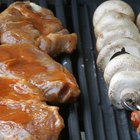
How to Use a Smoker Box for Gas Grilling

How to Cook With a Gas Fireplace
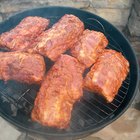
How to Smoke Ribs With a Gas Smoker
How to Cook Roast Beef in a Cast-Iron ...
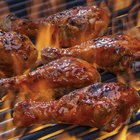
How to Cook Chicken in a Crockpot & ...

The Difference Between a Chafing Dish & ...

How to Use Wood Chips in a Smoker
What Do You Serve With Spareribs?
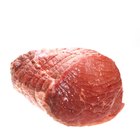
How to Cook Beef Topside in a Slow ...

The Best Way to Cook Less Tender Cuts ...

How to Cook in an Electric Frying Pan
Can You Oven Cook With Pottery?

How to Cook a Pork Chop on a Dome ...

How to BBQ the Eye of Round Roast
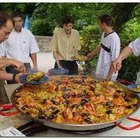
What is a Paella Pan?

How to Grill Ribs on a Charcoal Grill
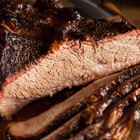
How to Steam a Brisket of Beef

Dutch Oven Cooking Schools

How to Cook Crab Legs in a Cajun Style
References
- Culinary Arts 360: Cast Iron Cookware
- Cowboy Cauldron: Behind the Scenes Cooking in a Cauldron
- Asian Exports: Cast Iron Cooking Cauldrons
- Maxim: Andrew Zimmern Talks Lobster Rolls, Cauldrons and Summer Grilling
- Nigella: Gulyajs in Cauldron
- The Science of Cooking: Braising Makes a Tough Cut Tender
- La Tienda: Murcian Cauldron
Resources
Writer Bio
Nick Marshall is a UK-based writer specializing in trends and best-practice in the B2B sector.
Photo Credits
Hemera Technologies/PhotoObjects.net/Getty Images